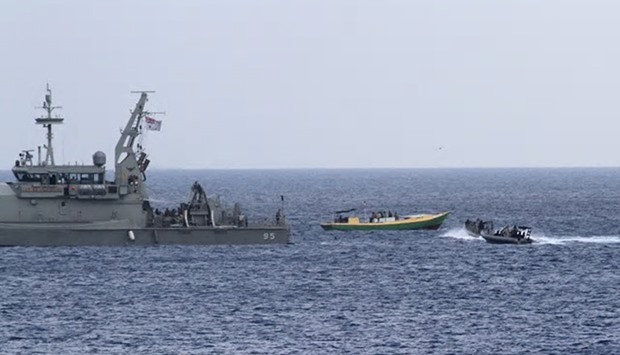Australian authorities deported to Sri Lanka a group of asylum seekers who were intercepted earlier this week near the Cocos Islands in the Indian Ocean, sources said yesterday.
However, the immigration ministry declined to comment on what it called an “operational matter” or reveal the exact number of people deported, which is
between 12 and 15.
Inhabitants of the Cocos Islands said the group departed on Thursday night on a chartered flight a few days after arriving in a boat, the first documented asylum seeker boat to arrive in Australia in almost two years, EFE news reported.
The asylum seekers, whose wooden boat made it to within 500m of the Cocos Islands on Monday, were flown to Colombo in a highly-secretive operation under the cover of darkness on Thursday night.
The government has refused to comment on the forced returns, with a spokeswoman saying only: “we do not comment on operational matters”.
The small boat was intercepted close to the Indian Ocean archipelago, about halfway between Australia and Sri Lanka, in rough weather on Monday morning.
Then, local eyewitnesses said, it was carrying an estimated 12 asylum seekers.
But yesterday morning another local witness, who asked not to be named, said there were more than 12 asylum seekers on board, and said the group included women and children - including at least one infant.
He said the asylum seekers were transferred from the Ocean Protector customs vessel on to a smaller boat, before being taken to West Island, where they were loaded onto a bus.
The asylum seekers were then loaded onto an Australian
charter flight.
The wooden vessel is understood to be the first boat in about two years to make it so close to the Cocos Islands, although the government has turned back at least one other boat in the past year.
The government has refused to make any comment about the boat’s approach, what process officials undertook to process their claims for asylum if any, or the operation to return them to Sri Lanka.
The asylum route to the Cocos Islands opened up in earnest in 2012, when Sri Lanka’s senior envoy in Canberra confirmed his government recently stopped a boat carrying more than 110 people departing for Australia via the Indian Ocean.
Before this, people smuggling syndicates had not historically targeted Coco Islands, preferring to send boats to Australian territory closer to Indonesia – either Christmas Island, south of Java, or Ashmore Reef off West Timor.
The distance between Ashmore Reef and the Coco Islands is more than 4,000km, a
massive expanse to patrol.
In 2001, Australia began its practice of mandatory detention of undocumented immigrants, who were trying to reach Australian shores, to third countries, which was interrupted for two years during the Labour government of then prime minister Kevin Rudd, who in 2013 toughened the country’s immigration policy and banned refugees from setting foot on Australian territory.
The principle of “non-refoulement” is key to the 1951 Refugee Convention, to which Australia is a signatory. Under that principle, countries must not return asylum seekers to danger, and must properly assess asylum seekers’ claims for protection.
Critics, including the UN refugee agency UNHCR have raised serious and repeated concerns that so-called “enhanced screening” measures do not offer potential refugees any meaningful chance of applying for protection.
In 2014, after Australia returned 41 Sri Lankan asylum seekers intercepted at sea, the UNHCR said the agency’s “experience over the years with shipboard processing has generally
not been positive”.
“Such an environment would rarely afford an appropriate venue for a fair procedure,” it said.
Many of the immigrants that Australia intercepts have fled conflict-ridden countries or regions like Afghanistan, Darfur, Pakistan, Somalia and Syria, or have escaped conditions of discrimination or statelessness such as the minority Rohingyas in Myanmar or the Biduns in the Persian Gulf.

About 12 to 15 asylum seekers who arrived on the Cocos Islands by boat this week have been returned to Sri Lanka by the Australian government.


